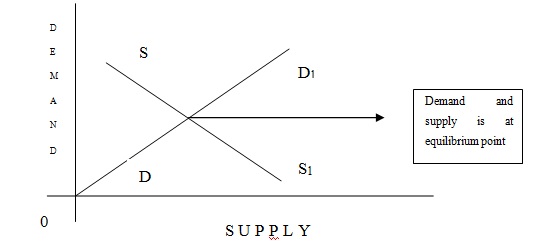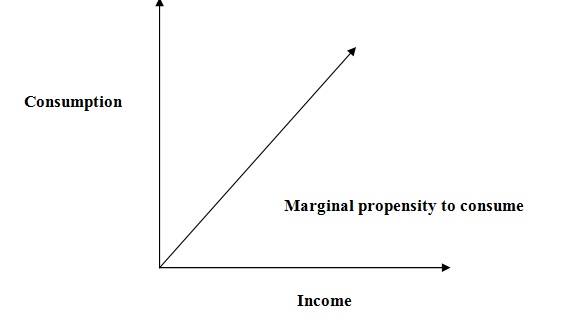a. Consider this statement: ‘Banks do not create money because this is the Central Bank’s responsibility. Do you agree or disagree? Explain.
Yes, it is true that the banks do not create money because of their Business Economics and it is the duty if Central bank. Central bank stores the money in its own body and supplies it to the native banks according to their value and position in the market. In this case, if the GDP rate of the country gets increased, then the store amount of the bank will also increase (Belk & Edelshain, 2009). It depends on the consumption nature of the market. If the people consume the total money, then it is not possible for the bank to increase its storage amount according to the growth of the Business Economics (Apte, Sercu & Kane, 2009).

b. Suppose that you deposit your pay cheque drawn on another bank into your own bank accounts. Explain the impact on the overall money supply that this will have in the economy.
If I have drawn a cheque from a bank and deposit it in another bank of the country, then t reflected that the money invested in the market and the interest getting high as I don’t consume the Business Economics after withdrawn it from the bank, we can use OxMetrics Software which is especially for OxMetrics Assignment Writing.
c. Suppose that you remove $100 from under your mattress and deposit it in the Westpack bank. If you required reserve ratio is 10 percent, what is the maximum amount the bank can lend from this deposit?
I remove $100 from the Westpack bank. If it calculation ratio is 10 percent then the number is
(100*10%) = 10
Then the maximum amount that I can lend from the deposit is = (100+10) = 110
Business Economics Assignment Help Question 3 :
a. A significant destruction in an economy’s capital stock because of an earthquake

Graph 1: AS-AD diagram
(Source: Collier & Davis, 2010, pp. 330)
In case of earthquake, it reflected that the supply of goods in market became decrease because of massive destruction in the society. In this above mentioned chart the demand graph and supply graph reflected that both have in equilibrium position in the society (Anderton, 2000).
It means the demand of product and the supply of the product both are same in the market. However, in case of earthquake, the supply of commodities becomes decrease as for the massive destruction in the society due to the earthquake. Therefore, the demand of goods increases in the market (www.economicshelp.org, 2014).
b. An increase in personal income tax.
If the personal income tax increase in nature, then it reflected that t5he demand of goods became decrease in nature as for the customer or the person is no longer able to afford the same investment in the market to purchase a good (Begg, Fischer & Dornbusch, 2005). Though the supply of goods remain same in the market but the demand of people decrease because of the income tax of that person get increased.
ORDER This Business Economics Assignment NOW And Get Instant Discount
c. An increase in exports.
If the exports of goods increase in the market therefore, it noticed that the supply in the internal market get decrease in nature. It reflects less supply and increased demand in the society. Allayannis, Ihrig & Weston (2009) stated that if the country increased the exports business to the foreign countries it reflected that the internal supply of goods gets decreased. Therefore, it is natural that the demand of goods in internal sector is getting high as the goods export in the foreign countries. It affected country’s GDP rate (www.economicshelp.org, 2014).
d. An improvement in the marketing and selling skills of firm managers.
It reflected by Anderton (2000) that, if the managers of the firm increased the sales of the product in the market, therefore, it is natural supply of the product getting high in the market due to the selling prosperity of the firms. However, in this case, the demand ratio of customers remains same in the market. The company can develop it by introducing new products in the market and create demand among customers that help to develop the selling power of that firm (Wall, 2003). In this case, the demand and sale came into the equilibrium position in the market.
Question 6:
a. Describe what is meant by the Marginal Propensity to consume (mpc) and give its formula.

Graph 5: MPC graph
(Source: Bodnar & Gentry, 2010, pp. 40)
MPC or the marginal propensity consume reflect the divide between the total unit of change and the total unit of income. It can analysed in such way that if a person consume 1 unit of product from the market a by expending his 1 unit of salary, it reflect the equilibrium position (Wall, 2003). Now, if the salary of the person gets increased, then the mpc is calculation upon the total number of salary and the consuming power of the person in the market (Mettam & Adams, 2009). In the diagram of mpc, the x axis reflected the change income of the person and the y axis reflected the consume nature of that person in the market place.
Formula of MPC:
ORDER This Business Economics Assignment NOW And Get Instant Discount

(MPC) is equal to ΔC / ΔY, wherein this calculation, ΔC is the consumption change and ΔY is income change of the person. If the consumption of the person increases by 75 units for each extra unit of income, then MPC is equal to 0.75 / 1 = 0.7
b. Assume that GDP rises from $550bn to $650bn and that this results in the consumption of goods and services rising from $340bn to $400bn. What is mpc?
As per the question the GDP rises from $550bn to $ 650bn.
Therefore, the reset of the GDP is = (650-550) = $100bn
On the other hand, the consumption of goods and services rising from $340bn to $400bn
Therefore, the change consumption is the (400-340) = $60bn.
Therefore, the mpc will be
(ΔC)/ (ΔY) = 60/100 =0.6
c. Assuming that the mpc remains constant, what will the level of consumption be if GDP rises to $700bn?
As mpc, fixed as 0.6
So, the total number of increased income is (ΔY) =$(700-550) = 150
Now the change consumption will be (ΔC)/150=0.6
Therefore,
(ΔC)= 90 and C will be $(340+90) = $430
d. If the Australian consumption of goods and services is $400bn, investment is $120bn, government expenditure is $150bn, exports of goods and services are $140bn, what is the level of aggregate expenditure (E)?
As the consumption of goods and services 400$, investment is 120$, government expenditure $150, and exports of goods and services is $140 then the level of aggregate expenditure (E) will be (400+120+150) = 670$
e. Given your answer to (d), and assuming that GDP is currently $650bn, what will happen to GDP?
In the question (d), it reflected that, the GDP get rise in the market because the consumption of goods became high in nature. The investment of capital and the government expenditure also is getting high in the market. Therefore, it is natural that the GDP of the country will increased for the investment of money and effort of government expenditure.
ORDER This Business Economics Assignment NOW And Get Instant Discount
Get BUS700 ECONOMICS Paired Assignment Help by Expert Writers.
Get Macroeconomics Theories And Scenarios Assignment written by experts.


